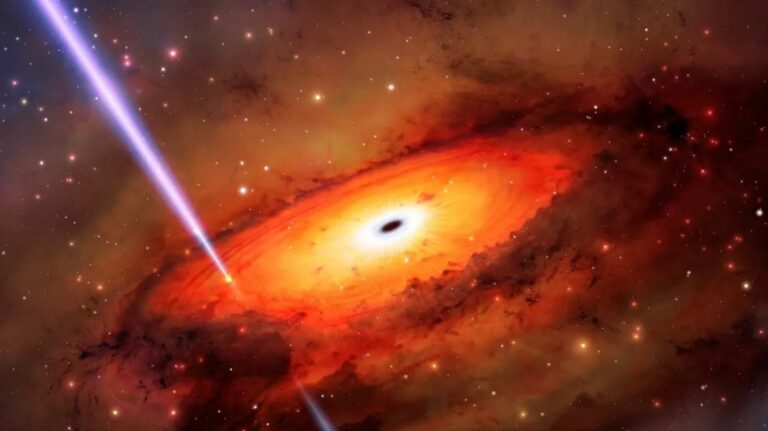Cosmic explosion hints at unique fate for distant stars in a celestial ‘demolition derby’.
According to a new study, recent findings indicate that stars can undergo their demise in the densest regions of the universe, where they have the potential to collide. The study suggests that a distant cosmic explosion, detected as a gamma-ray burst (GRB) almost four years ago, was likely the result of a collision between two stars or stellar remnants. Lead author Andrew Levan, an astronomer from Radboud University, stated that these results are significant for understanding stellar deaths and uncovering unexpected sources that could generate detectable gravitational waves on Earth.

Gamma-ray bursts are incredibly powerful cosmic explosions, emitting more energy in a matter of seconds than our sun will produce throughout its entire lifespan. They are categorized into two types: short bursts lasting two seconds or less, and long bursts that can extend for several minutes. Short bursts are believed to occur from the merger of neutron stars, while long bursts are typically associated with supernova explosions from stars at least 10 times more massive than the sun.
The analyzed burst, known as GRB 191019A, falls into the long burst category and lasted slightly over a minute. It was initially detected by NASA’s Neil Gehrels Swift Observatory in October 2019, originating from a galaxy situated approximately 3.4 billion light-years away from Earth.
Levan and his team conducted further investigations on GRB 191019A using the Gemini South telescope in Chile. These observations enabled them to determine that the explosion occurred within 100 light-years of the galaxy’s center, with no evidence of a supernova in that vicinity.
Levan explained that their follow-up observation indicated that the burst was likely the result of a merger between two compact objects rather than the collapse of a massive star. By pinpointing the explosion’s location at the center of a previously identified ancient galaxy, they obtained intriguing evidence of a new pathway for stellar deaths.
This new pathway involves the random collision of two stars or stellar remnants such as black holes or neutron stars, which are extremely dense cores left behind after stars have died. Collisions between such objects have been observed before, including through the detection of gravitational waves by the LIGO project resulting from the merging of black holes and neutron stars.
However, the hypothesized event behind GRB 191019A represents a more chaotic and unpredictable collision, rather than the merger of objects that were originally part of a binary pair. The study team suggests that near the heart of a galaxy, where immense gravitational forces from supermassive black holes disturb the motions of stars, there is ample opportunity for such random collisions to occur. The NOIRLab, which operates the International Gemini Observatory, states that in these environments, millions of stars could be traversing an area just a few light-years wide.
The NOIRLab officials further explain that the extreme density of stars in such regions may lead to occasional stellar collisions, particularly under the gravitational influence of a supermassive black hole. These collisions could occur as stars are propelled in random directions due to gravitational perturbations. Ultimately, these wandering stars could intersect and merge, resulting in a massive explosion visible across vast cosmic distances.
The research team aims to discover and characterize more events similar to GRB 191019A, ideally combining visible-light data with corresponding gravitational-wave detections. They believe that such “multimessenger” observations would provide significant insights into these mysterious explosions.
The new study was published online today (June 22) in the journal Nature Astronomy.
Do not forget to share your opinion with us to provide you with the best posts !





0 Comments